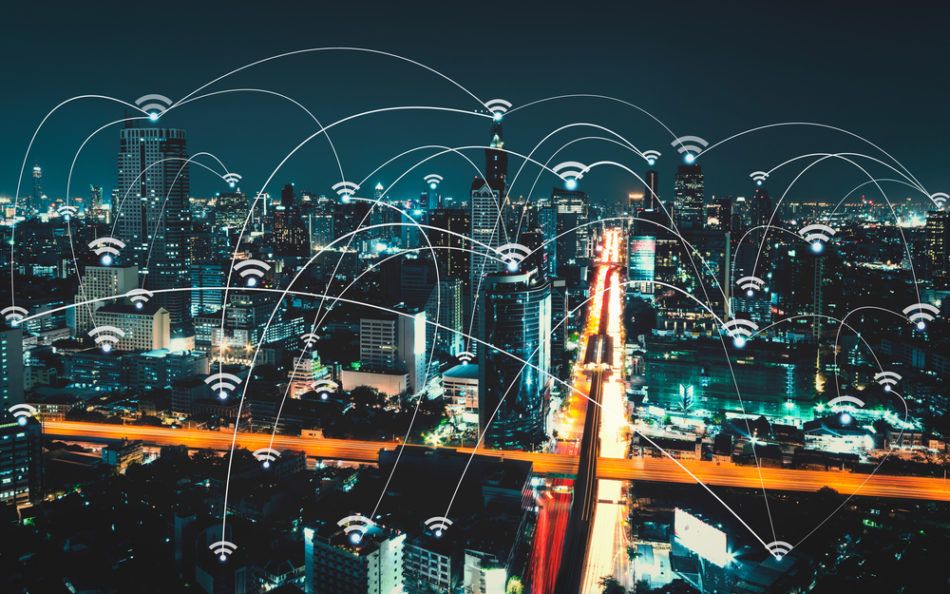WiFi 6 Is Coming and Enterprises Need to Think About Cabling

WiFi 6 promises to improve wireless speeds, but obsolete cabling could place a bottleneck on your network.
WiFi 6 — previously known as 802.11ax — is here, and that means faster speeds, greater control, and improved efficiency for your enterprise. When preparing to future-proof networks, IT professionals likely look to their access points and user endpoints (devices) to ensure compatibility with new wireless protocols. However, one of the most overlooked aspects of an enterprise’s wired infrastructure could render your upgrades meaningless — your cabling.
In short, WiFi 6-enabled devices and access points won’t do any good if the wired network isn’t designed to carry the requisite speed. In this article, we’ll review what types of cabling best support WiFi 6, and how enterprises can get the most out of their networks (and even their outdated cabling) without ripping and replacing.
WiFi 6 and Cabling
WiFi 6 is the latest WiFi protocol (and the first to officially switch from the 802.11 naming convention). It has been designed with a number of objectives in mind — to increase speed, reduce latency, help reduce battery drain on devices, and more than double the number of devices an access point can communicate with simultaneously.
Most relevant as it relates to the issue of cabling is WiFi 6’s increased speed. Theoretical maximums will be almost three times that of its predecessor, 802.11ac. Trying to run those speeds on the wrong cables simply won’t work: your access points may have the power, but if your cabling can’t support it, you’ll end up with the same WiFi speeds you had before.
The Best Cabling for WiFi 6
Twisted Pair
It almost goes without saying that when we discuss cabling for enterprise infrastructure, we usually mean twisted pair copper cabling. Fiber optic cable is still prohibitively expensive in a majority of use cases (although private fiber systems can be right for some enterprises — more on that below).
Twisted pair cables are named after the structure of the copper wires — pairs are twisted together, and then twisted with other pairs. Twisted pair cables are referred to by categories. As we’ve noted before, the categories correlate with speed and bandwidth:
- Cat5 cables: 10/100Mbps speed, 100MHz bandwidth
- Cat5E cables: 10/100/1000Mbps speed,100MHz bandwidth
- Cat6 cables: 10Gbps speed, 250MHz bandwidth
- Cat6A cables: 10Gbps speed, 500MHz bandwidth
- Cat 7 cables: 10/100Gbps, 600Mhz bandwidth
Any enterprise replacing their cabling infrastructure now should use at least Cat 6 or above. Cat 7 would likely future-proof performance for a while, as the next generation (Cat 8) is still in development and not yet intended for general office use.
Shielding
In addition to category, twisted pair cables are defined by shielding. Shielding refers to the layer of foil or polymer that protects the cables from external electromagnetic signals. Whether shielded or unshielded cables are right for your particular project depends on the environment (presence of interference) and budget.
Shielding is important for preventing interference and crosstalk. Electromagnetic interference (EMI) is the outside disturbance of a circuit that in this case could degrade network performance. Crosstalk is a specific kind of interference that occurs between twisted pairs in the same cable. Protecting from interference could make a huge difference in terms of getting the most out of your WiFi 6 network. On the other hand, excessive shielding can make cables less flexible and therefore may not be the right choice for compact settings.
Fiber Optic Cable
Fiber Optic cable is made of multiple “optical” (glass) fibers and uses light to transmit data. It is incredibly fast (indeed, nearly the speed of light), powerful, and well-suited to conducting over long distances. However, despite technological advances and recent cost reductions, fiber is still substantially more expensive than copper cabling — and in some cases less durable.
For organizations with large bandwidth needs over a WAN (healthcare, finance, any heavy users of VoIP), a private or “dark” fiber network is an increasingly feasible and beneficial option. The large installation costs must be assessed over a 15-20 year period of savings and may deliver comparatively greater ROI when viewed over this longer payback period. In terms of performance, a private fiber network will greatly help future-proof your network for WiFi 6 and likely several WiFi protocols to come.
It is possible to run fiber cable directly into an office or even right to a computer. However, twisted pair is still a much more common and practical choice for the “last mile” of internet service delivery, even on a private fiber network.
How To Be WiFi 6 Compatible Without Replacing Your Cabling
Completely replacing cabling for a campus-sized or large enterprise network is a costly and time-consuming endeavor. Fortunately, technological bridges do exist. HPE Smart Rate is a network interface that uses smart switch ports with multi-rate auto-negotiation and 5G speeds. This achieves the speed, bandwidth, and multi-device capacity of WiFi 6 with existing Cat 5e and Cat 6 cabling.
While Smart Rate technology will certainly represent a solid option for a number of enterprises, others will likely find that rip and replace provides better ROI. Regardless, enterprises have choices to make as they begin to prepare for the switch to WiFi 6. And with costly capital outlays to be made and substantial productivity gains to be had, making the right choice is paramount.
Enterprises looking to do their due diligence in making preparations for the transition to WiFi 6 would do well to lean on a networking expert like Turn-key Technologies (TTI). With nearly three decades of experience helping enterprises upgrade their networks for new technologies and new wireless protocols, TTI brings the expertise and the know-how necessary to ensure a successful transition.
